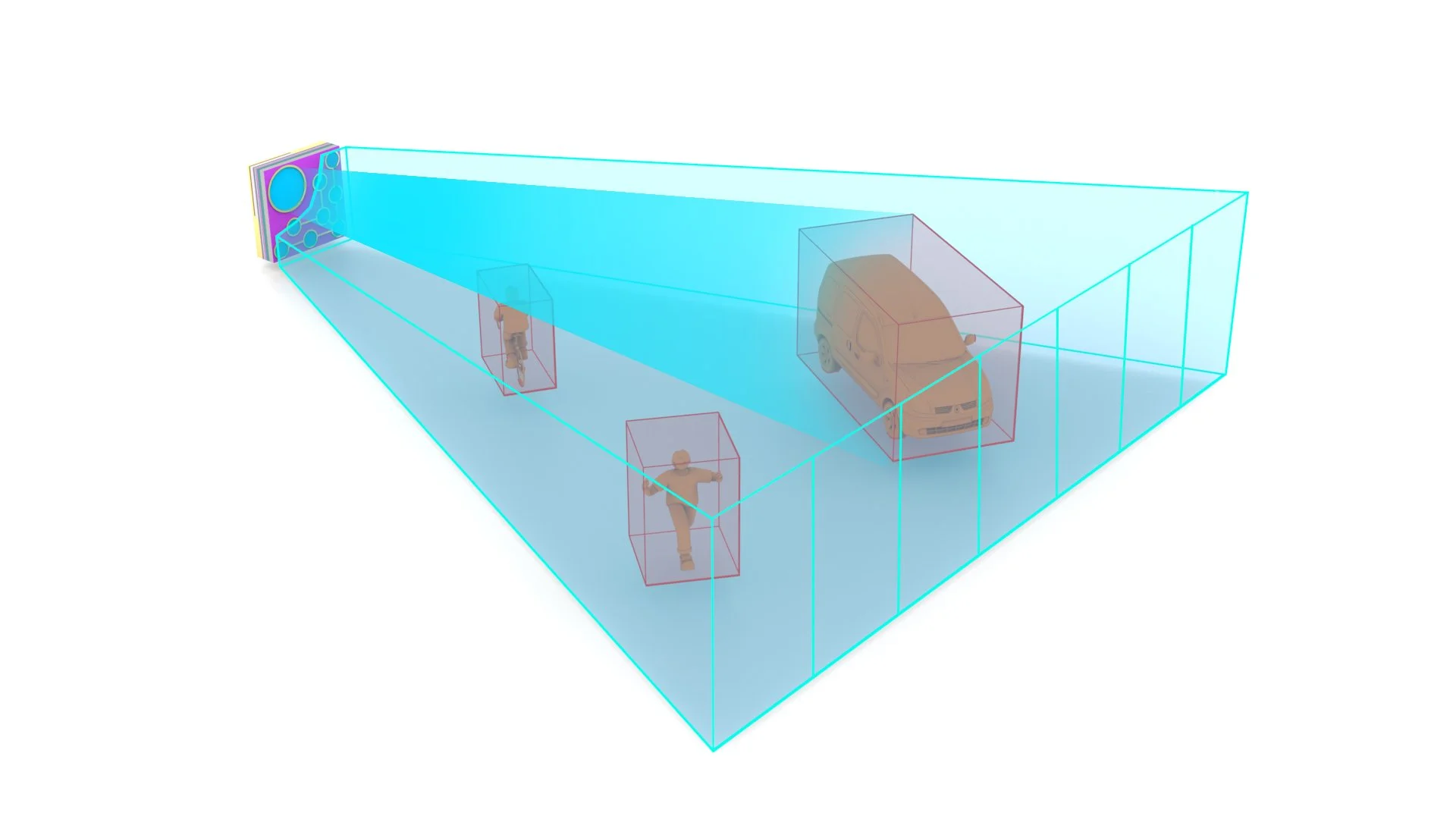VCSEL Divergence Angle: Improving Range and Resolution in LiDAR Systems
VCSELs, or Vertical-Cavity Surface-Emitting Lasers, are tiny yet powerful components revolutionizing the optical systems market. Unlike traditional edge-emitting lasers, VCSELs emit light vertically from the surface, offering unique advantages such as efficiency, compactness, and high modulation speeds. At Ace Photonics, we specialize in cutting-edge VCSEL technology, providing tailored solutions to meet diverse customer needs.
Understanding LiDAR Systems
LiDAR, short for Light Detection and Ranging, is a remote sensing method used to examine the Earth's surface. LiDAR systems emit laser pulses and measure the time it takes for the pulses to return after hitting an object, creating detailed three-dimensional maps. This technology is pivotal in many industries, from autonomous driving and environmental monitoring to archaeology and urban planning.
Role of VCSELs in LiDAR
VCSELs play a crucial role in modern LiDAR systems due to their small size, efficiency, and ability to modulate at high speeds. By integrating VCSELs into LiDAR systems, we enhance performance, offering better range and resolution compared to traditional laser sources. This integration makes LiDAR systems more reliable and efficient, enabling accurate mapping and detection over long distances.
Importance of Divergence Angle
So, what’s the big deal about the divergence angle? The divergence angle of a laser beam is the angle at which the beam spreads out as it travels. A smaller divergence angle results in a tighter, more focused beam, which is critical for applications like LiDAR that require precise measurements over extended distances. Controlling this angle is key to improving the performance of LiDAR systems.
Fundamentals of VCSEL Divergence Angle
Measuring the VCSEL divergence angle is vital for ensuring optimal performance. This angle is influenced by various factors such as the design of the laser cavity, the wavelength of the emitted light, and the quality of the optical components. Understanding these factors allows us to fine-tune the VCSELs for specific applications, ensuring they deliver precise and reliable results.
Optimizing VCSEL Divergence Angle for LiDAR
How can we optimize the VCSEL divergence angle for better range in LiDAR systems? One effective technique is to use advanced lens systems to shape and focus the beam. Additionally, precise control of the laser fabrication process can minimize imperfections, resulting in a more uniform divergence angle. Real-world case studies have shown significant improvements in range and accuracy when these optimizations are applied.
Enhancing LiDAR Resolution with Controlled Divergence
A well-controlled VCSEL divergence angle directly impacts the spatial resolution of LiDAR systems. Innovations in divergence angle control technologies, such as adaptive optics and dynamic beam shaping, allow for fine-tuning of the laser beam, leading to clearer, more detailed images and measurements. This level of control enhances the capability of LiDAR systems to detect and map objects with high precision.
Challenges in VCSEL Divergence Angle Control
Despite its benefits, maintaining a precise VCSEL divergence angle is challenging. Factors like thermal effects, manufacturing inconsistencies, and environmental conditions can cause variations. However, advancements in semiconductor manufacturing and real-time feedback systems are helping to overcome these hurdles, ensuring that VCSELs maintain a consistent and controlled divergence angle.
Applications in Autonomous Vehicles
Autonomous vehicles rely heavily on LiDAR systems for navigation and obstacle detection. A well-optimized VCSEL divergence angle enhances the LiDAR’s ability to detect objects at greater distances with higher accuracy, thus improving the safety and reliability of self-driving cars. This optimization is crucial for the development of autonomous driving technology, ensuring vehicles can navigate complex environments with ease.
Industrial and Commercial LiDAR Applications
Beyond autonomous vehicles, LiDAR systems with optimized VCSELs are transforming various industries. In industrial automation, they enable precise robotic movements and quality control. Commercial sectors, including construction and environmental monitoring, benefit from the detailed spatial data provided by advanced LiDAR systems. The ability to map and monitor environments accurately leads to better decision-making and increased efficiency in these industries.
Future of VCSEL Divergence Angle in LiDAR
The future looks bright for VCSEL technology in LiDAR applications. Emerging trends include the development of multi-functional VCSEL arrays that can dynamically adjust their divergence angle, paving the way for more versatile and robust LiDAR systems. As we continue to push the boundaries of what’s possible, Ace Photonics is at the forefront, ready to provide the next generation of customized solutions.
Conclusion
In summary, the VCSEL divergence angle is a critical factor in the performance of LiDAR systems. By understanding and optimizing this angle, we can significantly improve the range and resolution of these systems, unlocking new possibilities across various industries. At Ace Photonics, we are committed to delivering innovative VCSEL solutions tailored to your needs, ensuring you stay ahead in this rapidly evolving field.


